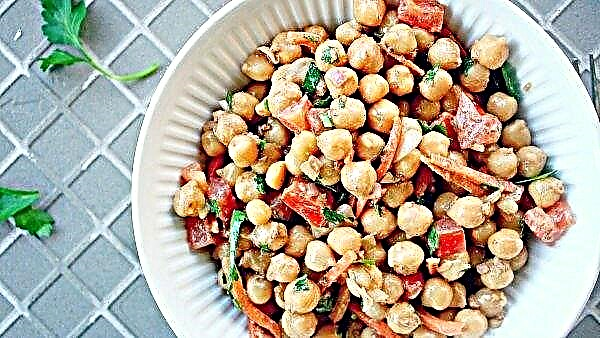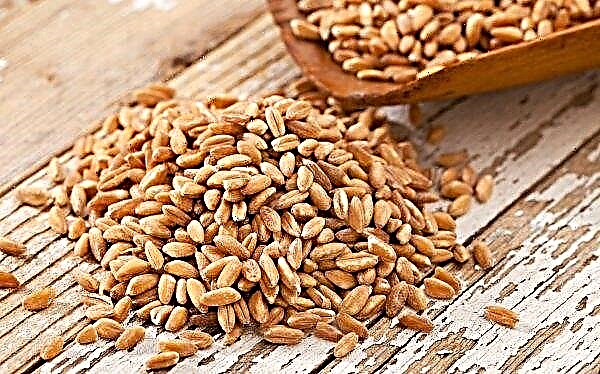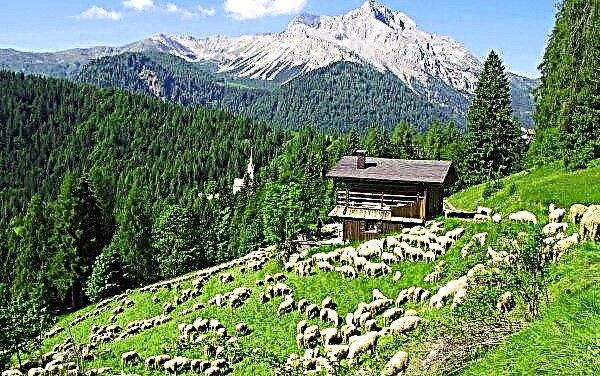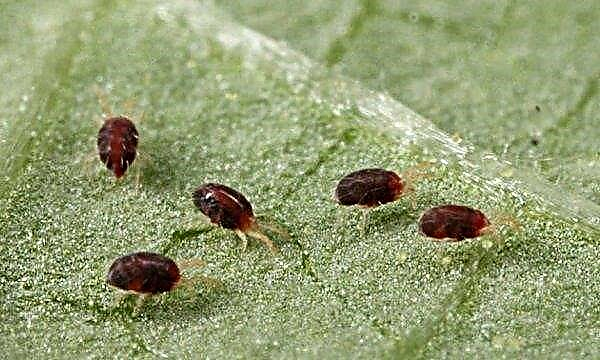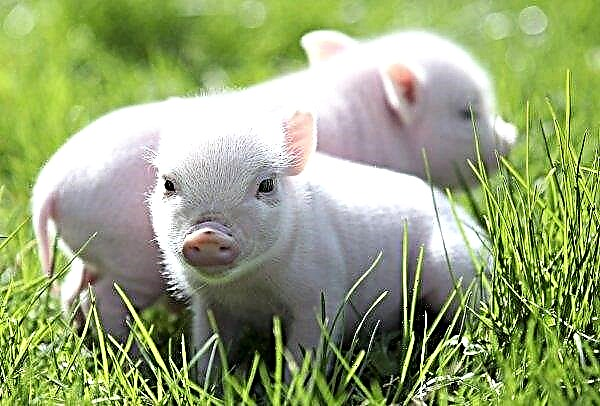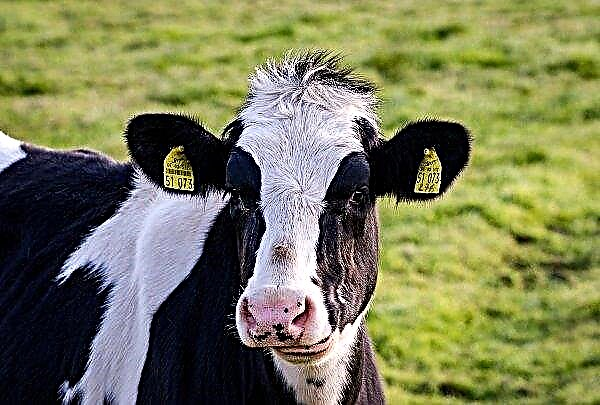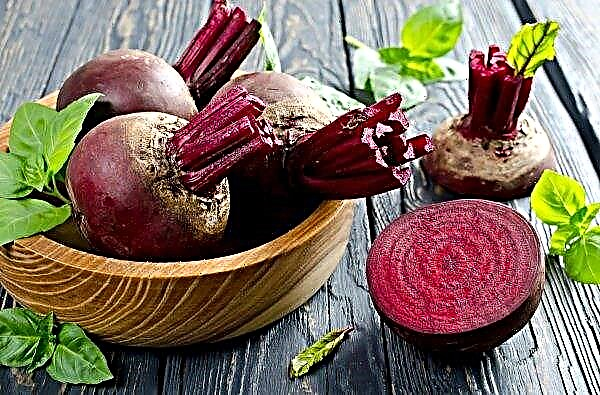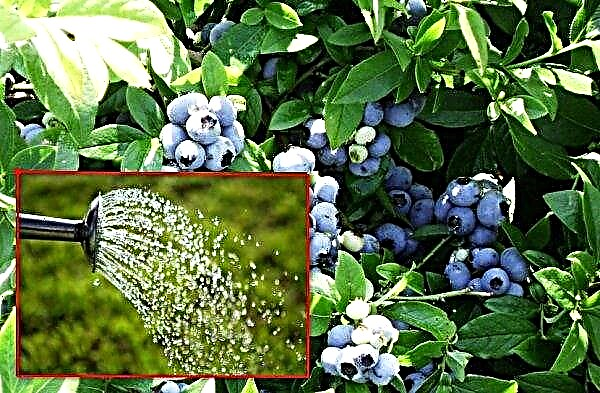When it comes to picking seeds for growing tomato seedlings, it is very difficult to navigate in a variety of different varieties. We want to help a little and introduce you to a fairly new tomato variety called Gulliver. It was bred by the Russian breeder Myazina and recommended for cultivation in the Central Black Soil in open ground, and in greenhouses - in central Russia.
Important! There are tomatoes on the market with similar names, for example, “Gulliver’s Heart”, “Gulliver F1” (hybrid variety). However, they have other properties and characteristics, so be careful.
Grade description
We will begin our acquaintance with the main characteristics of Gulliver:
- It has an early ripening period: after emergence before harvest, 95-100 days pass.
- Determinant type, gives a high yield (up to 7 kg per plant).
- A bush from 70 to 120 cm high, forms flower brushes, requires a garter.
- Leaves are medium sized, color is green.
- The tomato has a simple inflorescence and a peduncle with an articulation. The point where the first inflorescence is laid is not indicated.
- Fruits are cylindrical in shape, long (up to 12 cm), smooth, the tip is rounded.
- Tomato weight - 96–114 g.
- The pulp is dense, pink-red, almost without liquid, tastes sweetish.
- The fruits in the filling stage are light green in color, and those that have reached technical maturity are red.
- The peel is thin, but dense, not subject to cracking.
- The fruits are used in fresh, canned form, very good for the preparation of juices, pastes, sauces.
- Tomatoes are well stored, transportation is transferred without any problems.
- The variety has good resistance to most tomato diseases, prevention is desirable.
- Resistant to temperature changes.
- For 1 square. m can accommodate 6 bushes.

Advantages and disadvantages
- The advantages of this variety are:
- suitable for growing both in greenhouses and in unprotected soil;
- not demanding about care and climatic conditions;
- resistant to many diseases of tomatoes;
- the ability to collect their seeds;
- the fruits have a universal purpose.
- The disadvantages are:
- cultivation of this variety is recommended for the Central Black Earth Region (there is no data on how the variety will behave in other regions);
- average yield.
How to grow tomato seedlings yourself
If desired, it is not at all difficult to grow seedlings on your own. To do this, you need to know some points that we will talk about now.
Optimal timing
Gulliver seeds are recommended to be sown at the very beginning of March. At least 50, but not more than 70 days must elapse before landing on a permanent place of residence.
Soil mix
Here you can go the easy way and buy a ready-made mixture specifically designed for growing tomato seedlings. But if you have significant sowing volumes, then it’s cheaper to prepare your own soil mix.
The soil for obtaining good seedlings is light and must consist of a mixture of earth (turf or garden), non-acid peat, sand, humus or compost, wood ash.
Important! All components must be prepared in the fall, until there is no frost. If you take the soil from the garden, then in this place cultures from the nightshade family should not have grown in the summer, namely: tomatoes, potatoes, peppers, eggplant.
Proportions for optimal composition:
- land - 1 part;
- peat - 2 parts;
- sand - 1 part;
- humus (compost) - 1 part;
- wood ash - 1 cup per 1 bucket of the mixture.
Important conditions for growing good seedlings are screening and disinfection of the soil mixture. It will be convenient to steam it in a double boiler, which will get rid of pathogenic microbes, spores of mushrooms and weed seeds.
It is best to carry out this procedure a week before the proposed sowing, which will allow all beneficial bacteria to restore their activity. They recommend adding sphagnum to the soil mixture to improve air permeability, and coconut fibers, vermiculite, etc. are also suitable for this.
They recommend adding sphagnum to the soil mixture to improve air permeability, and coconut fibers, vermiculite, etc. are also suitable for this.
Container for growing
Prepare containers for seedlings in advance. For tomatoes, small boxes, containers with cells, separate cups made of plastic or peat, as well as peat tablets, are suitable.
What to choose - you decide, taking into account the conditions of accommodation and your financial capabilities. We only note that sowing in individual containers will save you from further picking of grown seedlings.
Did you know? Until 1822, in the civilized world, tomato fruits were considered poisonous. Thanks to Colonel Robert Gibbson Johnson, stereotypes were broken. He ate a whole bucket of tomatoes in front of a crowd of two thousand onlookers and was not going to die, after which people believed in the safety of tomatoes.
Seed preparation
It was the turn to prepare seeds for planting. This procedure can consist of several stages, which we will list below. It is not necessary to do all of them, but at least one or two of them will help to increase the germination of seeds, and hence the yield.
So, seed preparation can be done as follows:
- Culling or sorting. Prepare a solution of ordinary kitchen salt at the rate of 1 teaspoon in 1 cup of water, let stand. Then place the seeds in the liquid. Surfaced to the surface are not suitable for landing and are thrown away. Seeds that have fallen to the bottom are full, so they are washed, dried and prepared further.
- Disinfection. It is necessary to make a one percent solution of potassium permanganate and soak the seeds in it for 20 minutes, then dry.
- The use of nutrient solutions. As such, ready-made preparations, for example, Epin, potassium or sodium humate, are suitable. Some gardeners use juice from aloe leaves or potatoes to saturate the seeds with nutrients. The stage should last at least 12 hours, after which the seeds are dried.
 These are the main steps in seed preparation. Some gardeners, before planting, soak the seeds for 12 hours in water at room temperature or even germinate.
These are the main steps in seed preparation. Some gardeners, before planting, soak the seeds for 12 hours in water at room temperature or even germinate.Sowing seeds
For sowing, fill selected containers with prepared soil mixture. If you are sowing tomatoes in individual containers, then it is necessary to spread the seeds one at a time, and then carefully deepen them by 0.5–1 cm or sprinkle with a layer of soil of 1 cm.
In case of sowing in boxes, first make grooves 1 cm deep, and leave a distance of at least 3-4 cm between the grooves. Now spread the seeds in increments of 1-2 cm and sprinkle them with earth.
Keep in mind that the less often you sow seeds, the later you will plant seedlings in individual containers. You can not make grooves, but simply spread them on the ground in the same way and sprinkle with a layer of soil of 1 cm.
After planting, close the containers with film or glass to maintain constant humidity.
Seedling Care
For successful seed germination, a temperature of 25–30 ° C is needed. Therefore, place containers near a heat source, such as a radiator.
Another necessary condition is a sufficient amount of light - the total duration of daylight hours should be at least 16 hours. It is impossible to provide such conditions in March using natural daylight.
Therefore, consider how you will light the seedlings. For this, you can use ordinary fluorescent lamps or special phytolamps. Constantly monitor soil moisture. If it has dried, moisten it abundantly with a spray bottle. If the humidity is increased, then it is necessary to ventilate the containers, for which just open the film or glass and wait until the soil dries out a little.
Constantly monitor soil moisture. If it has dried, moisten it abundantly with a spray bottle. If the humidity is increased, then it is necessary to ventilate the containers, for which just open the film or glass and wait until the soil dries out a little.
Important! Usually incandescent bulbs are not suitable for illumination, because they are very hot and can cause seedling burns.
With this care, after 3-4 days, the first shoots of tomatoes will appear. Now they need constant humidity, so do not remove the film and do not allow even the slightest drying of the soil, especially from above. Remove protection after 2 weeks.
Water the grown seedlings carefully, preferably under the stem, using a syringe (without a needle) or a pipette.
If you need a pick, then wait for the first real leaves (usually they appear after 7-10 days) and carefully transplant the seedlings into individual containers. At the age of 2-3 weeks, plants can be dived again if a larger volume of soil is required.
The first top dressing is recommended to be done 3 weeks after the appearance of the first sprouts, and then weekly. As fertilizers, you can use natural organic matter (from manure, grass) or store preparations (biohumus).
Seedling hardening
A good method to strengthen seedlings and accelerate growth is hardening. To do this, it is necessary to keep the seedlings for some time in fresh air, the temperature of which reached 12 ° C. For this, a balcony, a veranda, a quiet place on the street are suitable. If there is no such place, then open the window when a sunny spring day is outside.
Hardening of tomatoes is best started a month before transplanting to a permanent place. But this must be done gradually. The first solar hardening should last 5 minutes, and then increase the time by 5 minutes daily. If you do everything right, then the stalks of tomato seedlings will have a purple hue.
If you do everything right, then the stalks of tomato seedlings will have a purple hue.
In addition to good growth, hardening allows you to prepare the plant for further life in the open ground.
Planting seedlings in a permanent place
To plant tomatoes in a permanent place, prepare the beds in advance: dig and loosen the soil, make holes and spill them. The distance between the beds should be 70 cm, and between the plants in the same bed - 45 cm.
Since the Gulliver variety is tall, immediately dig a peg next to each plant to make a garter in the future. The length of the peg should be at least 1.8 m.
Planting dates can be different, it depends on weather conditions and the state of seedlings.
But in general, it is necessary to adhere to such recommendations:
- the soil has already been warmed up to at least 15 ° C;
- make sure that the threat of night frost has passed;
- seedlings have a height of at least 20 cm, the thickness of the stem is at least 5 mm, the number of leaves is from 6 pieces.
Did you know? All over the world there are at least 10 thousand varieties of different tomatoes. The smallest - with a diameter of only 2 cm, and the weight of the largest on average - 1.5 kg.
In view of the above, planting of tomatoes in the ground usually takes place closer to mid-May. But if you have a greenhouse with heating, then you can plant plants at the end of April.
How to care in the open ground
The secret to a good tomato crop is proper care after planting seedlings for permanent residence. Therefore, we describe in detail all the nuances.
Watering
Tomato bushes with an unprotected landing should be watered regularly, most importantly - infrequently, but abundantly. If there is no rain, then do watering once a week, and if it rains regularly, less often.
Do not fill the tomatoes with water, this will lead to diseases, but do not dry them, otherwise all the ovaries will fall. Try to water the plant under the root so that moisture does not get on the leaves and fruits.
Experienced gardeners recommend the use of drip irrigation. In this case, moisture gets directly to the root system and, if watered in the evening, you will avoid the top rot of the fruit.
Top dressing
For a good development of the bush and a plentiful harvest, you need to use top dressing. You need to do them at least 3 times per season, but it is better to fertilize every 2 weeks.
Choose fertilizers at your discretion, but keep in mind that their nitrogen content is less than the content of phosphorus and potassium.
You can recommend this composition for 10 liters of water:
- ammonium nitrate - 15 g;
- superphosphate - 50-60 g;
- potassium chloride - 30-40 g.
Tomatoes also respond well to bird droppings. To cook it, take 1 liter of dry droppings and 1 liter of water, mix and place in a warm place, soak for several days for fermentation. For watering, dilute the resulting mixture with water (1 part of the litter - 10 parts of water).
Stepson
The tomato variety "Gulliver" can not be stepson, but it is best to form a bush of 2-3 stems, which will not increase the load on the plant.
To do this, wait for the first brush, and then leave one side shoot near it (if 2 stems are needed) or another strongest shoot near the second stalk (if 3 stems are needed).
Soil care
The soil around the bushes of tomatoes must be periodically taken care of. To do this, be sure to loosen the earth after watering or rain - this will remove the crust and allow air to flow freely to the roots. Also do the hilling of the bush as necessary and remove all weeds.
To avoid the appearance of earthy crust and constant loosening, severe drying of the soil and the appearance of weeds, mulch tomato beds. You can use straw, needles, compost, agrofibre.
Bush tying
A tomato such as Gulliver is subject to binding due to its significant growth. This will not only protect the bush from diseases and pests, but also facilitate your care.
Consider several ways to garter:
- Using a peg. This is the simplest and most common method in which pre-prepared stakes are deepened near each bush at a distance of 10 cm. Then a string of the required length is fixed on the peg, and the tomato is freely tied as it grows. For Gulliver, prepare stakes of at least 1.8 m in length made of wood or metal.
- Trellis. This method is recommended in case of a large number of bushes. To make the trellis, you need 2 strong racks (wooden or metal) 2 m long, which must be driven in at the ends of the tomato ridge. Between them tightly pull the wire - you can once higher, but several, but at different heights. Garter is made freely with a string.
- Bush cage. This method is the most time-consuming, but will serve more than one season. To make a cage, it is necessary to prepare several circles with a thick wire with a diameter larger than the width of the bush, then fasten them with vertical struts in the shape of a cylinder. Such cells need to be made according to the number of bushes and set near each. Tie should be tied as the plant grows.



Preventative treatment
As stated in the description of the manufacturers, as well as by reviews of growing specialists, the Gulliver tomato has good resistance to various diseases, subject to the rules of care. But prevention is still recommended.
It consists in removing the lower leaves, preventing excessive moisture, watering strictly under the root. Make sure that tomato bushes are not near plantations with potatoes.
Good results are obtained by periodically spraying with a solution of boric acid (1 g of acid per 1 liter of water), but always in the evening. Similarly, baking soda can be used.
From harmful insects, you can use infusions of plants whose smell repels. These include tansy, wormwood, dandelion. You can also plant marigolds, marigold or other cultivated plants with a strong aroma around the tomato bed.
When the first signs of the disease appear in tomatoes, it is necessary to carry out chemical treatment, strictly observing the precautions.
Gulliver tomatoes, which relatively recently appeared on the seed market, found their fans. Subject to all requirements, gardeners received a good crop of tomatoes, which are good both in fresh form, and in pickles, sauces.
Therefore, get the seeds of this "Gulliver", grow seedlings yourself and get delicious tomatoes. Good luck in gardening!

